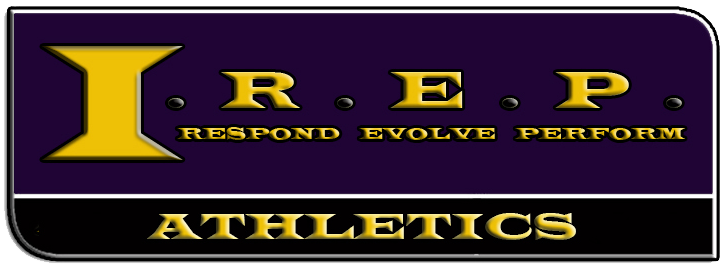No Pain, No Gain
Certain sensations of discomfort or fatigue are to be expected when exerting oneself physically. Feeling your muscles burn a bit during an intense cycling session or experiencing general fatigue in your limbs after a vigorous workout is standard. These “pains” can be seen as signs that your body is indeed working, pushing its limits, and consequently, adapting to handle more strain over time.
This natural discomfort is vastly different from the painful sensations that should never be ignored during workouts. Sharp pain, joint discomfort, chest pain, or feelings of dizziness are not standard facets of a beneficial workout. These symptoms could indicate underlying health concerns or immediate threats like injuries.
Some people push themselves beyond their limits in every single workout session, hoping the consequential pain equates to muscle growth. While resistance training does create micro-tears in our muscle fibers leading to growth and strength increase after repair, repeated extreme strain without adequate rest can negatively impact muscle recovery and growth and could potentially lead to injuries.
Pain can actually deter people from incorporating workouts into their daily routine by making the exercise experience unpleasant (or even dreaded). This hinders the fundamental goal of sustainable physical fitness, which should ideally be a lifelong pursuit and not a short-term, pain-ridden slog.
Lifting Weights Bulks You Up
The process by which humans increase muscle size, known as muscle hypertrophy, requires specific factors, some of which include a targeted resistance-training program, a calculated calorie-surplus diet, and a particular genetic predisposition towards muscle growth.
 The routines involving resistance training vary vastly, from those meant for developing strength, increasing endurance facilitating muscle growth or “bulking.” Not every weightlifting exercise will promote a significant increase in muscle size. It takes high-volume training with heavy weights, combined with a high-caloric diet, to foster the kind of muscle growth bodybuilders aspire to.
The routines involving resistance training vary vastly, from those meant for developing strength, increasing endurance facilitating muscle growth or “bulking.” Not every weightlifting exercise will promote a significant increase in muscle size. It takes high-volume training with heavy weights, combined with a high-caloric diet, to foster the kind of muscle growth bodybuilders aspire to.
Testosterone, more prevalent in men, contributes notably to muscle building. The average woman produces only about 5-10% of the testosterone that men do, making it considerably harder for women to develop bulky muscles through weightlifting.
In terms of the female population, resistance training or weightlifting is more likely to result in a toned physique than a bulky one. With the appropriate weightlifting regimen, one can expect improved muscle tone, enhanced strength, better balance, and a significant boost in metabolic rate, aiding weight management. The bulking up that many fear simply does not occur without additional, intentional measures to achieve that specific outcome.
Embracing weightlifting by incorporating it into your workout routine has proven benefits, including building lean body mass, improving balance, reducing the risk of osteoporosis, and enhancing fitness and wellness.
Stretching Before a Workout Prevents Injury
Static stretching refers to the process of elongating a specific muscle or group of muscles to the point of mild discomfort and holding it for an extended period, usually 15-60 seconds. Вynamic stretching involves moving parts of your body and gradually increasing reach, speed of movement, or both, making the stretches more sport-specific.
The presumption was that static stretching loosens up the muscles and prepares them for the impending physical exertion, thus preventing injuries. Recent studies suggest that static stretching before a workout might potentially harm performance.
Research indicates that static stretching, conducted pre-workout, may impair muscle strength and performance, particularly if the stretch is held for longer than 60 seconds. Decreased muscle strength, shaky balance, and reduced body control post-static stretching can indirectly increase the risk of injury when a workout follows.
Static stretching does not reduce muscle soreness after exercising. The consensus among fitness experts these days is that static stretching is better suited to the post-exercise cool-down period, where it can enhance flexibility and cool the body down gradually.
Dynamic stretching involves performing gentle motions that mimic the activities that you’re warming up for. This form of stretching prepares the joints for action, thereby reducing the risk of injury. This type of stretching improves muscle performance and power output, making it an appropriate warm-up choice before strength, speed, and power activities.
You Should Work Out Every Day
For our bodies to perform at their best, they periods of recovery. When you exercise, you inflict minor damage to your body tissues, especially during strength training where micro-tears occur in your muscle tissues. Your body’s response is to repair and reinforce the affected areas, ultimately leading to muscle growth and strength gain but for this process to occur effectively, recovery time is key.
Rest days are when the body gets an opportunity to repair, rebuild, and strengthen itself. Your body replenishes energy (glycogen) stores and reduces physical fatigue accumulated from consecutive workout days. It aids psychological recovery by preventing burnout and maintaining your enthusiasm towards the workout regime.
The ideal frequency of workouts depends on a variety of factors, including the type and intensity of workouts, individual fitness levels, and one’s health and fitness goals. While it’s completely okay to be physically active every day through light activities such as walking, gardening, or mild yoga, strenuous workouts should not be a daily endeavor.
Physical activity guidelines recommend engaging in at least 150 minutes of moderate activity or 75 minutes of intense activity, coupled with strength exercises on at least two days, throughout the week. These guidelines encourage regular physical activity spread throughout the week.
Balancing physical exertion with necessary rest is vital for enjoying the full spectrum of benefits fitness offers. Ignoring this equilibrium by succinctly working out without allowing for rest, recovery, and rejuvenation can counterproductively lead to fatigue, decreased performance, and an increased risk of injuries.
You Can Outrun a Bad Diet
Supporters argue that as long as you burn more calories than you consume, you can maintain a healthy weight regardless of the type of food you eat. This oversimplified view falls short on considering the nuanced aspects of nutrition, health, and wellness.
While exercise plays an undeniable role in burning calories and facilitating weight management, the type of food you consume largely determines your body’s capacity to perform physically, recover, and maintain optimal health. Regular consumption of nutrient-deficient, highly processed, or high-sugar foods can lead to chronic inflammation, aggravated fatigue, poor digestion, and even increase the risk of conditions such as heart disease, diabetes, and certain cancers. These potential health hazards cannot be just outrun on a treadmill.
Exercise, in combination with a balanced, nutrient-rich diet, is the most effective way of achieving and maintaining optimal weight and health. A ‘healthy diet’ focuses on the regular inclusion of nutrient-dense foods, portion control, and moderation with less nutritious options.
Consuming a wide range of vegetables, fruits, proteins, healthy fats, and complex carbohydrates provides the necessary nutrients and energy to sustain regular physical activity and support the subsequent recovery phases. Balanced nutrition helps bolster the immune system, enhance mental well-being, and reduce the risk of chronic diseases.
Trying to compensate for poor dietary habits with excessive exercise can result in an uphill battle that poses long-term limitations to your overall health and well-being. Finding a balance between regular, enjoyable physical activity and healthy eating habits can set the stage for a sustainable, healthy lifestyle.
